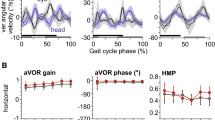Abstract
Correctional and intentional steering manoeuvres in locusts differ in several important respects. The most profound difference between the two is the production of large forewing asymmetries in angle of elevation during the downstroke in intentional steering that are not obvious in correctional steering. We investigated the flight motor patterns during intentional steering responses to a radiant heat source. We found asymmetries in the timing of forewing first basalar (m97) activity on the left and right sides that were strongly and positively correlated with forewing asymmetries. Timing asymmetry in the second basalar (m98) and pleuroalar (m85) muscles was not significantly different from the changes observed in m97. The hindwing first basalar (m127) shifted its asymmetry in the opposite direction. The forewing subalar muscle (m99) did not shift its asymmetry with the same magnitude as m97, but instead was phase-shifted relative to m97 on the left and right sides, suggesting its role as a supinator. We conclude that large asymmetries in the elevation angle of the forewings during the downstroke, as are evident in intentional steering, are generated by bulk shifts in the activation times of forewing depressor muscles to cause a relative shift in the time of stroke reversals of the two forewings.
Similar content being viewed by others
Author information
Authors and Affiliations
Additional information
Accepted: 19 June 1998
Rights and permissions
About this article
Cite this article
Shoemaker, K., Robertson, R. Flight motor patterns of locusts responding to thermal stimuli. J Comp Physiol A 183, 477–488 (1998). https://doi.org/10.1007/s003590050273
Issue Date:
DOI: https://doi.org/10.1007/s003590050273




